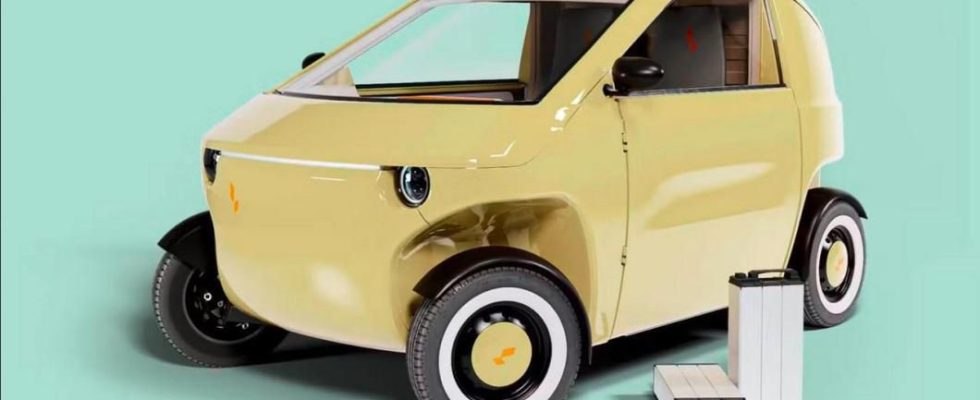ZFE: three small letters that provoke the ire of the French. To the point that the government discreetly reversed course this summer on traffic restrictions in these low-emission zones. The fact remains that air quality in urban centers combined with the sacrosanct freedom of movement is a major issue. The millions of petrol and diesel vehicle owners who struggle to navigate city centers can now find lower-cost solutions. Like the Swedish company Luvly, inventor of the ready-to-assemble electric microcar, delivered in a large flat box, a bit like an Ikea piece of furniture! No panic. Assembly will be entrusted to the neighboring mechanic. This two-seater, equipped with a removable battery that recharges at home and can travel up to 100 kilometers, sells at an unbeatable price: 10,000 euros.
But to drive cleaner, you don’t necessarily need to change cars. The transformation of thermal propulsion into electric, called retrofit, has been legal for three years, even encouraged by the State which subsidizes it to the tune of 6,000 euros. This involves removing the engine, tank and exhaust to install the electrical system with battery. This conversion has a cost: from 15,000 to 20,000 euros. So, for small budgets, an SME has found an intermediate solution. GCK switches a 100% Diesel to a plug-in hybrid thanks to the addition of a kit allowing it to cover up to 70 kilometers. Quite sufficient autonomy for commuting.
“These systems save around fifteen tonnes of CO2 over the ten years following their installation,” estimates Christophe de Charentenay, president of M@Air. For this carbon-free mobility expert, it is above all the availability of energy that becomes problematic. “In metropolises, the installation of terminals at reasonable prices at the foot of buildings becomes inevitable in order to avoid inequalities,” he argues.
The specialist is campaigning for France to take inspiration from Italy, which retained a limited number of operators and negotiated prices on a national scale, when in France responsibilities have been fragmented. The solution for an affordable offer? “Prioritize low-power installations, like those adopted in Oslo [Norvège]”, recommends Christophe de Charentenay. Since a car is stationary almost 90% of the time, there is no need to increase the kilowatt hours.
Brands from the Middle Kingdom are breaking into Europe
In June, there was joy in Brussels. For the first time, Community registrations of electric vehicles exceeded those of diesel. But the party was cut short: the statistics also showed the breakthrough of Chinese manufacturers. Their market share has doubled since 2021, to 8%, and it is expected to double again over the next eighteen months until it poses a serious threat to the brands of the Old Continent. Two thirds of the 500,000 models imported into Europe last year were electric. “China has adopted a holistic approach to its industry,” recognized Sigrid de Vries, director general of the Association of European Automobile Manufacturers. In the automobile sector, this has translated into the mastery of ‘entire value chain, from mines to batteries’. A profitable strategy since these new players can display ultra-competitive prices and claim 24% of battery cars sold since the start of the year. MG, owned by the Shanghai SAIC, is also the only one to offer leasing with a rent of 99 euros per month without contribution. The red wave will be difficult to contain.
